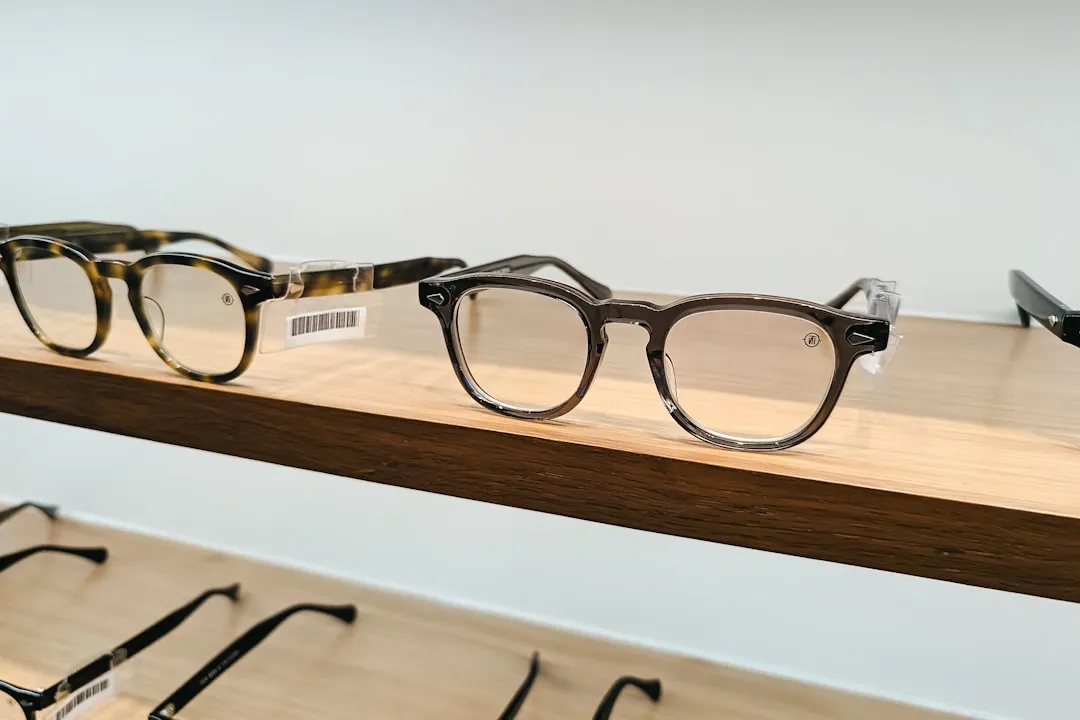The year 2020 was a pivotal span of time during which the word "virtual" took on a brand new meaning. Instead of referring to VR or augmented reality, the term was hijacked to describe meeting across long distances through a variety of software tools, most often through video.
But while the dominance of the term as a way to describe video meetings has been irritating to some within the AR and VR space, I would argue that this is exactly the kind of mainstreaming shift that AR needed to begin to enter the minds of those who have never truly investigated immersive computing. Although the story of "virtual" in 2020 began with video, for many, it has led them to investigate the frontier of AR and VR that has been developing all around them. This is how the shift to immersive computing begins.
Proof of this immersive computing momentum is surfacing all around us. For example, a recent ABI Research noted that funding for AR and VR companies in 2020 was robust, exceeding $2 billion, with AR companies including Mira, MAD Gaze, North, Magic Leap, and Nreal all benefiting from either additional funding or an acquisition event.
Similarly, research firm Statista forecasts that, despite the current economic pandemic-powered gloom currently hovering over the planet, investments in AR and VR will likely reach $72.8 billion by 2024, representing a 54 percent increase in the next five years. Even independent immersive computing startups like Tilt Five and Looking Glass have defied the odds and garnered new funding amid what has been widely deemed an economic recession, bordering on a depression. Black swan headwinds be damned, immersive computing's growth curve remains aggressively on the upswing.
Underlying this unrelenting bullish climate for immersive computing is a general shift in how we communicate, and how we see one another.
Back in February, I walked down a Manhattan street, clad in an N95 mask, and watched a number of hardened New Yorkers, either unaware or unconcerned about the coming pandemic storm, chuckle and sometimes smirk at the sight of my masked face. Now, nearly a year later, masks have become a staple of life, and in many cases a way to transmit your personality, your style, your intent. This dynamic, in its own way, is also the beginning of the story of virtual avatars, both in AR and in VR.
This global event is how many AR and VR uninitiated will become comfortable with a new culture of wearing a mask — both physical and virtual — to assume a different persona, or accentuate your own. The mask, digitally rendered and real, has arrived, and thanks to AR and VR, it will never again be seen as something one hides behind, but rather as yet another common tool. Whether the mask is delivered through Snapchat, Instagram/Facebook Portal, TikTok as an AR filter or through the avatars in Microsoft's AltspaceVR, which hosted this year's virtual Burning Man, self-expression through all manner of masks is becoming the norm, and immersive computing will be at the forefront of this cultural shift.
The real question now is which companies and individuals wisely leaned into the radical shift in business meetings, training, entertainment, and communications 2020 forced us all to embrace? Who remained nimble and focused enough to ride the unpredictable dragon this year has pushed into all our lives? That's what this year's Next Reality 30 (NR30) is all about.
It's not just about the survivors of 2020, it's about the thrivers. When the moment called, who was ready to triple down on their vision of an immersive computing future in a practical way that sets the stage for real gains and meaningful market penetration in 2021 and beyond?
We have a few answers for you, read on!
—Adario Strange
1. Tim Sweeney, CEO/Founder – Epic Games/Unreal Engine
Many know Epic Games, the company behind Unreal Engine, and its founder, Tim Sweeney, as the purveyor of software and tools that help build virtual worlds and experiences for AR, VR, and traditional 2D screens. But in 2020, Sweeney and Epic Games acted to fundamentally change the course of software history when it took on Apple in a battle over fees and what kind of access developers and app companies have to consumers.
But what's more important than Sweeney's decision to take on Apple was the result: He won. Sort of.
If you didn't follow the fight, in short, what happened was that Epic Games disagreed with Apple's stranglehold on in-app purchases for apps in the Apple App Store. It started, at least publicly, back in the summer when Sweeney claimed in interviews with The Washington Post and CNBC that Apple is a monopoly. "Apple has locked down and crippled the ecosystem by inventing an absolute monopoly on the distribution of software, on the monetization of software," said Sweeney on CNBC.

Tim Sweeney (right), Epic Games
At the time, Apple charged a whopping 30 percent fee for all digital transactions on the iOS platform. That 30 percent is no small matter, it represents a hefty portion of what Apple reported as $519 billion in "billings and sales" in 2019. Over half a trillion dollars. Sweeney's overall fight included the Google Play Store, but most of his focus, and the tech industry's, seemed to be reserved for Apple and the iOS platform.
At the center of the fight was Fortnite, a mega successful game with roughly 350 million users around the world. Part of Fortnite's experience involves in-app purchases, which is where Apple's major cut comes in. In an attempt to break this fee structure, Epic Games attempted to work around the fee by making direct payments available in Fortnite, which quickly led to the popular game being removed from the iOS platform by Apple in August. Epic Games responded by filing a lawsuit against Apple and Google (which also removed the game from its app store for similar reasons).
Not long after, executives from Microsoft, Spotify, and other companies publicly weighed in with support for Sweeney's claims against Apple. Things quickly escalated when Apple countersued Epic Games.
Currently, the trial for Epic Games vs. Apple is set for May 2021, but in the meantime, Sweeney's actions appear to have prompted an unprecedented development: Apple backed down...somewhat. In November, Apple announced that it would reduce the fee for some users. "Small and individual developers who earn up to $1 million in revenue for the calendar year are eligible for a reduced 15 percent commission rate — half of the App Store's standard commission," read Apple's official announcement last month.
Of course, Apple isn't giving Sweeney or Epic Games the credit for the move, but the sequence of events, and the timing of the fee reduction, in addition the pressure of a government-led antitrust investigation, is fairly obvious: Apple knew it was time to blink. In the short-term, the beneficiaries will be the smaller developers of apps for iOS. This is particularly good news for developers who have devoted their efforts to ARKit. While VR can often be a download-once and play forever exercise, AR specifically lends itself to mobile use cases and the in-app transactions that can be afforded by this emerging space.
This major step back by Apple, in the wake of pressure from Sweeney and his supporters, will resonate for years and likely impact the AR economy in major ways, most notably, making the process of developing ARKit apps a lot more profitable. As for Sweeney's lawsuit, we'll have to wait until next year to learn its fate, but for now, AR developers hoping to launch on iOS now have a major ray of hope, thanks in part to the efforts of Epic Games and its founder.
2. Eric Yuan, CEO/Founder – Zoom
The popularity of Zoom, fueled by the remote work parameters of the pandemic, skyrocketed in 2020. In fact, it's now common for users of Skype and Google Meet to refer to their virtual (aka video) meetings as "Zoom meetings," even if they've never used Zoom software. But part of the story that is not as well known are the augmented reality features embedded in Zoom.
In addition to Zoom's native ability to do things like give you a virtual background (what we refer to as "broadcast AR"), thus obscuring your possibly cluttered home, the software also integrates with tools from companies including Snap (via Snap Camera), and NexTech AR Solutions to allow for everything from making your face look a little better to exploding 3D versions of products into your real-world surroundings.

Eric Yuan, Zoom
As the founder and CEO of Zoom, Eric Yuan has managed to keep Zoom at the top of the list of go-to solutions for virtual meetings, responding to challenges like concerns about corporate security with speed and execution. The challenges Zoom faces in the next year are significant, but as major players attempt to compete, and upstarts like Mmhmm provide innovative interactive solutions for Zoom, the company's dominance looks fairly unassailable, at least for the near future.
3. Tim Cook, CEO – Apple
Before Apple ever produced a single AR product, Tim Cook ranked number 26 in the 2017 NR50 purely on the strength of rumors, patent awards, and acquisitions of AR companies and talent. Then Apple revealed ARKit, Apple's toolkit for building AR apps for iPhones and iPads and front-facing cameras with depth sensors on the iPhone X, and Cook leaped to number one in the 2018 edition of the NR30. Today, Apple smartglasses still exist mainly in whispers from unnamed sources, despite the introduction of innovative new features to ARKit and game-changing tools like RealityKit.

Tim Cook, Apple
This year, Apple, under Cook's leadership, has made its biggest contribution to AR since the launch of ARKit. In March, Apple the long-rumored arrival of rear-facing depth sensors to Apple's mobile devices came to fruition in the latest generation of iPad Pros, followed by iPhone 12 Pro. What made this expected development even more exciting was that Apple opted for LiDAR sensors to add depth-sensing capabilities and more robust AR experiences to AR apps.
In any other year, Apple's LiDAR innovations would return Cook to the top spot, but that's 2020 for you. In fact, back in 2017, we expected Apple to have joined the AR smartglasses revolution, as their "secret" development was due to arrive this year. Now, that reported timeline has slipped to 2022 for an AR/VR hybrid and 2023 smartglasses. In the meantime, Cook and company continue to preview what will come for its AR wearables in the form of its software and hardware innovations for iPhones and iPads.
4. Evan Spiegel, CEO/Founder – Snap
Since we began tracking the top contributors to augmented reality, Evan Spiegel has made a home in the top 10 of our rankings due to his company's pioneering of mobile AR experiences via Snapchat. After debuting at number seven in 2017, Spiegel leapfrogged Tim Cook for the top spot in the 2019 edition of the NR30.

Evan Spiegel, Snap
While Spiegel has slipped behind Cook this year, it isn't necessarily a reflection of Snap's performance. As a matter of fact, Snap's financial performance has boomed despite the pandemic. In October, its stock price nearly doubled after the release of its third-quarter earnings report, buoyed by the strength of its AR advertising platform. Snapchat continues to develop viral AR experiences as well, with its Anime Lens fitting the bill in 2020. On the developer side, Lens Studio continues to gain fantastic new capabilities, including Local Lenses for persistent and shared AR experiences.
In addition to the pioneering AR in Snapchat, Spiegel and company have their eyes on smartglasses, too. The Spectacles line-up of camera-equipped wearables finally moved into proto-smartglasses territory with the ability to capture 3D content that can be edited and shared through the Snapchat app. With 2020 winding down, it does not appear that we'll see the next step in the evolution of Spectacles this year, but we'll watch with interest to see where Spiegel and Snap go next.
5. Andrew Bosworth, VP of VR/AR – Facebook/Oculus
Whenever the name Oculus comes up, there's always a bittersweet conversation involved. Long-time Oculus users love the VR platform, with some caveats, while hardened critics and newcomers alike seem mostly focused Facebook's increasing involvement in the once independent VR platform. Most recently, the dustup around Oculus focused on the incredibly successful debut of the Oculus Quest 2. The all-in-one VR headset has better graphics than the original, and some of the titles on the device, like Population: One and Beat Saber are quickly turning VR into a mainstream staple.
But one change has rankled old and new users: you're now required to use a Facebook account to use the Quest. Before, an unassociated Oculus account was sufficient. The reason this shift is troubling to so many revolves around the fact that Facebook's handling of accounts with regard to a person's real name/identity and the potential of being banned for seemingly minor infractions is now directly tied to a piece of hardware that, in general, has nothing to do with the Facebook website.

Andrew Bosworth, Facebook
Although Mark Zuckerberg is frequently referenced when this topic comes up, the person charged with facing the public and really answering questions is Andrew Bosworth. And while his answers don't always satisfy, and sometimes upset some users, the fact is that he is now the primary lens through which much of Facbook's VR and AR policy get filtered to the public. But why is the manager of a VR device on the NR30? If you have to ask, you probably haven't used the Quest, which has a passthrough feature that all but screams "this is where Facebook will be testing AR features for future smartglasses." Currently, you can set your VR virtual background to passthrough mode, which then allows you to do things like browse the web in VR while viewing your real-world environment — effectively, AR. Similarly, back in September, Facebook revealed a passthrough prototype for Spatial that allows you to use the Quest to hold virtual meetings while retaining a view of your real-world surroundings.
And next year developers are slated to get access to the Passthrough+ API that will allow for more AR style experiences on the Quest. So despite some Facebook's critics, and the uneven reception to the new Oculus policies, it's clear that Quest is not only on the frontier of VR, but AR as well, and Bosworth has a major hand in steering the ship. So far, the journey seems to be going (mostly) well.
6. Zhang Yiming, CEO/Founder – Bytedance (TikTok)
The dominance of Instagram and Snapchat in the realm of short viral content has been challenged in a major way by TikTok. The app is now so popular (roughly 100 million monthly active U.S. users) that its Chinese roots (the Chinese version of the app is called Douyin) prompted the U.S. Department of Defense to advise that the app be deleted from the smartphones of its military workers and sparked an ongoing effort by the federal government to ban the app in the U.S. Nevertheless, the app remains alive on U.S. app stores and is as popular as ever.
Part of that popularity is facilitated by the app's AR features, which were prominently on display earlier this year thanks to a post from Hollywood star Will Smith. The next major phase of TikTok's AR initiative will come in the form of what the company calls Branded Scan which, like Snapchat before it, will allow companies to more easily integrate interactive AR features into the TikTok app experience. Additionally, eagle-eyed TikTok watchers have also noticed a recent hiring push by the company to add AR developers to its ranks.

Zhang Yiming, ByteDance
However, despite the immense momentum of the app and its emerging stars, Zhang Yiming, the founder of ByteDance, the parent company of TikTok, faces major challenges. Due to data security concerns and a new political environment in which Chinese startups are under a microscope, the path to sustained success isn't so simple for Yiming in the West. As of now, you can still access the TikTok app in the U.S., but that may change any day now. But regardless of what happens in the next few weeks or months, Yiming's efforts have finally caught the attention of U.S. competitors, and now mobile AR is more competitive than it has ever been.
7. Hugo Swart, VP and Head of XR – Qualcomm
Having established dominance in the smartphone realm, Qualcomm has its eyes set on the future with its chips for VR and AR headsets. The company announced the XR1 for smartglasses in 2018, launching in Google Glass Enterprise Edition 2 and Vuzix M400. Qualcomm followed with the XR2 for more advanced wearables late last year, with the chip making its commercial debut in the Oculus Quest 2 this year. Meanwhile, the Snapdragon 850 powers the HoloLens 2. Hugo Swart is not only the executive in charge of these initiatives, but also the one who has essentially grown Qualcomm's entire AR and VR business from scratch.

Hugo Swart, Qualcomm
At Universidade Estadual de Campinas in Brazil, Swart earned a Bachelors degree in electrical engineering in 1999 and a Masters in telecommunications engineering in 2004, followed by an MBA from San Diego State University in 2008. Swart began his career at Lucent Technologies and Telecom Italia (TIM) before joining Qualcomm's Brazil-based technical marketing team for wireless technology in 2003. In 2005, he earned a promotion that transferred him to Qualcomm's headquarters in San Diego as director of technical marketing.
In 2011, he became senior director over IoT and Consumer Electronics, where his role called for identifying and developing new market segments for Qualcomm technologies. In addition to drones, robotics, smart assistants and displays, and set-top/over-the-top boxes, Swart developed business plans and go-to-market strategies for AR and VR. His work in establishing the AR and VR segment led to his promotion to vice president and head of XR in 2017. With Qualcomm maintaining its status as one of the top system-on-a-chip makers in the world, Swart is positioned to lead the charge in one of the most important component segments for the growth of AR headsets and smartglasses.
8. Alex Kipman, Microsoft Fellow & HoloLens Inventor
Have we officially named a Godfather of Augmented Reality yet? If not, Alex Kipman would be an ideal candidate. The creator of the Kinect motion-tracking sensor for the Xbox 360, Kipman went on to invent the HoloLens, one of the first true augmented reality headsets, with work on a prototype beginning in 2012.

Alex Kipman, Microsoft
Microsoft's follow-up, the HoloLens 2, reigns as the top augmented reality headset that you can buy today.
With 2019 dedicated to announcing and releasing the HoloLens 2, Kipman and Microsoft have been a bit more quiet in 2020, with the exception of the continued retrofitting of HoloLens 2 as an Integrated Virtual Augmentation System (IVAS) for the US Army.
9. John Hanke, CEO/Founder – Niantic
What started as an April Fools Day prank at Google has evolved into the top AR game development company in the world. The story actually starts back in 2004, when Google acquired Keyhole, a mapping app startup founded by John Hanke in 2001. Hanke and the Keyhole team would go on to develop Google Maps, Google Earth, and Street View. In 2014, the Maps team created the Pokémon Challenge, an idea that would eventually become the cash cow Pokémon GO.

John Hanke, Niantic
In 2010, Hanke founded Niantic Labs as an experimental unit within Google. The team developed Field Trip and Ingress, which would serve as the foundation of Pokémon GO. Niantic spun-off as its own independent company in 2015, with backing from Google, Nintendo, and The Pokémon Company. A year later, Niantic launched Pokémon GO, still the reigning champion of AR gaming. While the hype behind the game has died down, Pokémon GO remains one of the top grossing mobile apps, regardless of AR capabilities.
While Niantic continues to develop follow-ups based on the Harry Potter and Catan franchises, the next great contribution by Hanke and company might be the Niantic Real World Platform, which will bring next-generation experiences like multiplayer, persistent content, and real-world occlusion to Niantic's games as well as to other apps by developers adopting the platform. The company is now in the position of influencing and investing in the AR industry, with an investment into microdisplay maker DigiLens and proceeds from GO Fest 2020 going to African-American developers.
10. Peggy Johnson, CEO – Magic Leap
They all thought Magic Leap was dead. After massive layoffs and the departure of the company's founder and CEO, Rony Abovitz, a lot of the talk was around who might buy off Magic Leap for parts. But then the company pivoted in July and hired Microsoft veteran Peggy Johnson, who in short order has shed the company's previously uber-mysterious aura and repeatedly faced the public to deliver the company's new message of its focus on the enterprise market.
Gone is the lofty language around "spatial computing" dreams, and music, and creativity. It has now been replaced by the kind of pragmatic language that befits a company that would hope to directly compete with Microsoft's HoloLens.

Peggy Johnson, Magic Leap
"Magic Leap's technological foundation is undeniable, and there is no question that has the potential to shape the future of XR and computing," said Johnson, in a statement following the announcement of her joining the team. "As CEO, I look forward to strategically building enduring relationships that connect Magic Leap's game-changing technology and pipeline to the wide-ranging digital needs of enterprises of all sizes and industries,"
An electrical engineer by training, Johnson is also a veteran of Qualcomm. That's right, this isn't simply a new corporate face tapped to refresh Magic Leap's image, Johnson is a serious technology executive with the kind of background capable of turning Magic Leap around. Now, steered by its new leadership, let's see if there's any magic left in the company's leap.
11. Stefano Corazza, Head of Augmented Reality – Adobe
Most casual users might just know Adobe for its Photoshop product, but Stefano Corazza is the person leading Adobe's AR efforts, headlined by its Aero AR creation platform. However, Corazza's influence in AR extends beyond his role at Adobe. He served as board member for Allegorithmic, which Adobe acquired in 2019, and was an investor/advisor to 3D scanning startup Matterport, 3D content creation platform Artomatix (acquired by Unity), social gaming developer Evertoon (acquired by Niantic), and the 3D animation tool that he developed, Mixamo (also acquired by Adobe).

Stefano Corazza, Adobe
12. Alban Denoyel, CEO/Co-Founder – Sketchfab
It's almost impossible to frame the story of French entrepreneur turned New York City startup veteran Alban Denoyal, the co-founder and CEO of Sketchfab, without also mentioning his competitors. Most notably, Google Poly, the 3D asset marketplace launched by the search giant in 2017, over five years after Denoyel founded Sketchfab and proved there was a need for such a resource.
However, it turns out that in 2020, it's not the smaller startup shutting its doors, but instead Google Poly has announced that its 3D asset tool is kaput. Google Poly launched with great fanfare, but its closing was as quiet as Google could possibly make it. But Denoyel made sure to highlight the message sent to Poly users from Google. Just one year earlier, Microsoft also shut down its Sketchfab competitor called Remix3D.

Alban Denoyel, Sketchfab
And while those moves by major players might seem like a negative signal for Sketchfab, the opposite appears to be the case. "September was our first profitable month! Getting there has been my main focus for the past 3 years," wrote Denoyel in a recent blog post. "After spending three years in 'survival' mode, we are now in control of our destiny!" With deep integrations Shopify, Snap, Google Search, and Instagram, Sketchfab, which now boasts four million users, is gradually becoming the go-to resource for 3D asset creators to profit from their creations that find their way into a wide array of AR, VR, and gaming apps.
13. Mike Rockwell, Head of AR/VR – Apple
The worst kept secret in the AR space is that Apple is working on a pair of smartglasses. The dates for the release of this secret device keep changing as well-sourced Apple analysts keep moving the goalposts, but as the iPhone and iPad get LiDAR and ARKit continues to improve, all eyes are focused on Mike Rockwell, whose job it is to lead the way into Apple's immersive wearable future. Rockwell, with a long background at Dolby Labs and Avid, Apple continues staffing up for what appears to be its new focus beyond the realm of the 2D screen.

Mike Rockwell, Apple
14. Clay Bavor, VP, Virtual and Augmented Reality – Google
A contributor to the development of such significant Google products as Gmail, Google Docs, Google Drive, and Google Workplace (formerly G-Suite), Bavor is also the co-creator of Google's Cardboard VR platform, which has led him to his position as one of the leaders of Google's AR and VR efforts. His chief contribution comes via Google's AR toolkit ARCore, which evolved from Project Tango and competes with Apple's ARKit. Since its launch, the ARCore team has added innovative features such as Cloud Anchors for persistent and multi-player experiences and Depth API for real-world occlusion. In addition to ARCore, Google has launched Google Lens, Live View in Google Maps, and AR content in Google Search under Bavor's leadership.

Clay Bavor, Google
15. Jeremi Gorman, Chief Business Officer – Snap
Augmented reality is a key driver of advertising revenue for Snapchat, and Jeremi Gorman is the executive in charge of that advertising business at Snap, which increasingly reveals the frontier of truly interactive marketing at the dawn of the AR age. Gorman left her role as head of global field advertising sales at Amazon in 2018 to join Snap, where, as chief business officer, she took over a share of the workload left behind by departing executive Imran Khan (also a former NR30 member). She earned her undergraduate degree from the University of California, Los Angeles.

Jeremi Gorman, Snap
16. Paul Travers, CEO/Founder – Vuzix
In the enterprise realm, Paul Travers and Vuzix have prospered as companies have turned to remote AR software solutions running on Vuzix smartglasses to overcome travel restrictions during the pandemic. While their bread and butter is currently in the enterprise realm, Travers and Vuzix have eyes on the consumer segment as well, with the sporty Blade available now and next-generation smartglasses with a more conventional design coming in 2021.

Paul Travers, Vuzix
17. Jim Heppelmann, President and CEO – PTC
Serving as CEO, Jim Heppelmann leads the charge for PTC, a leading technology provider for industrial enterprises. Among his achievements during his tenure is the acquisition of Vuforia, a popular third-party AR platform developed by Qualcomm and positioned as an enterprise solution at PTC. Heppelmann also serves a thought leadership role in the industry, penning several articles, most recently AR and How We Work: The New Normal, on the technology.

Jim Heppelmann, PTC
18. Tony Parisi, Global Head of AR/VR Brand Solutions – Unity
Today, he drives the AR advertising business at Unity, one of the leading 3D engines for AR apps and experiences. But, before that, he was a pioneering developer in VR. Parisi had a hand in creating Virtual Reality Modeling Language (VRML) and Graphics Language Transmission Format (glTF), the latter of which is now a standard for 3D content in web-based AR.

Tony Parisi, Unity
19. Diana Hu, Director of AR Platforms – Niantic
Niantic has earned its unicorn status on the shoulders of Pokemon GO, but its future may lie in the Niantic Real World Platform, and Hu servers as its caretaker. Hu co-founded Escher Reality, maker of software for persistent and shared AR experiences. Niantic acquired Escher Reality in 2018, and the startup's technology, along with Hu and her team, have been the catalyst behind the Niantic Real World Platform, particularly its integration into Niantic's existing apps.

Diana Hu, Niantic
20. Rick Osterloh, Senior VP Devices & Services – Google
By now, anyone even loosely informed about the history of Google Glass knows that it's a cautionary tale. The device too expensive ($1,500), too hyped (you needed a hard to get invite to get one), and too early (people weren't yet accustomed to ubiquitous mobile cameras 'everywhere'). That Google paired up with major fashion brands and made a big push to make Google Glass cool, and still ended up with "glasshole" as the historic nickname for the device scared many would-be entrants into the AR space.

Rick Osterloh, Google
But that was then. Now, companies like North and its Focals wearable, which Google in June, are timed right, priced right, and even look fashionable. Now that the Canadian startup is under Google's wing, it will be Rick Osterloh to use what North started and take another crack at the wearable smartglasses space, this time a lot less creepy and far less pricey.
"We're building towards a future where helpfulness is all around you, where all your devices just work together and technology fades into the background. We call this ambient computing, said Osterloh, in a statement. "North's technical expertise will help as we continue to invest in our hardware efforts and ambient computing future."
21. Timoni West, Director of XR – Unity
While her peer, Tony Parisi, is responsible for Unity's ad business, West is the force behind the development of the company's AR tools. This includes AR Foundation, a set of APIs for Unity that enables developers to build apps for Apple's ARKit and Google's ARCore simultaneously. Her team's most recent endeavor, Mixed and Augmented Reality Studio (or Project MARS) might revolutionize AR creation by simplifying the process altogether.

Timoni West, Unity
22. Phil Libin, CEO/Co-Founder – Mmhmm
As the co-founder and former CEO of popular note-taking app Evernote, Phil Libin's latest venture seeks to revolutionize the suddenly ubiquitous world of video conferencing. Mmhmm gives remote workers the ability to create immersive video presentations, where the audience can choose how they view the experience. Among the Mmhmm's features are dynamic virtual backgrounds and AR effects triggered by gesture recognition to liven up video calls.

Phil Libin, Mmhmm
23. Amy Hedrick, CEO/Co-Founder – Cleanbox Technology
Nothing is more important in 2020 than hygiene. The pandemic has made this clear. And as nearly all tech conferences were forced to shut down in 2020 due to concerns of virus spread, the new list of hygiene protocols will hit AR and VR businesses even harder. How do you sample new AR software and hardware at a busy conference, or even at a local store in a new environment that makes every interaction closer than 6 feet a risky proposition? Enter Cleanbox, a solution described as "UVC light in an LED [which] provides safe, hospital-grade hygiene."

Amy Hedrick, Cleanbox Technology
According to the company, the system "kills Covid 19 with 99.999 +% efficacy." Founded in 2016 by Amy Hedrick, the startup may now become one of the most important operations in the mainstreaming of AR and VR.
24. Anand Agarawala, CEO/Co-Founder – Spatial
Spatial has become of of the most aggressive new software platforms in the AR and VR space. The company initially spotlighted its work on high-end AR platforms like the HoloLens and Magic Leap. This year Spatial brought its full avatar-based collaboration software to the Oculus Quest 2. During that presentation, the company also previewed an AR version of the software working on the usually VR-only device.

Anand Agarawala, Spatial
Later this month, the company will also reveal a major new mobile component of the software's offerings. Spatial's co-founder and CEO Anand Agarawala now appears poised to become one of the innovation-focused linchpins of the newly emerging and ever more vital remote collaboration market.
25. Erik Murphy-Chutorian, CEO/Founder – 8th Wall
Back in 2016, Erik Murphy-Chutorian founded 8th Wall, but before that he was an engineer at Google and Facebook, where he contributed to Google Photos and Facebook Messenger, respectively, eventually raising $10.4 million in funding to build AR development tools. In a relatively short period of time, 8th Wall has launched tools for cross-platform AR toolkits, volumetric video, web-based AR prototyping, and image recognition, but the company's bread and butter is its web-based AR platform.

25Erik Murphy-Chutorian, 8th Wall
In recent years, 8th Wall has delivered web-based AR ads for brands like Sony Pictures, Fox, Toyota, and MillerCoors and AR experiences featuring the likes of Snoop Dogg, Sarah Jessica Parker, Pink Floyd, and The Rock.
26. Dr. Nadine Hachach-Haram, CEO/Founder – Proximie
Every year more and more of the medical community buys into the notion that AR use in medical procedures is less an experiment and more of an essential tool. But surgeon Dr. Nadine Hachach-Haram was ahead of the curve when she founded Proximie back in 2016. The software system allows doctors to "virtually scrub in" to operating rooms from around the world remotely to collaborate and advise other doctors.

Dr. Nadine Hachach-Haram, Proximie
27. Jason Yim - CEO/Executive Creative Director – Trigger
Although his firm operates mostly under the radar, Jason Yim's Trigger Global agency is arguably the foremost adopter of AR for the purposes of marketing and advertising. Trigger has placed AR at the forefront of promotion for the last three Spider-Man films (live-action and animated) and several installments of the Star Wars franchise, delivered AR experiences for Time magazine, and facilitated AR apps for Travelocity, the NBA, and the PGA Tour, among others.
In addition, Yim and Trigger are ahead of the curve on experimenting with AR platforms, as they have been among the first to integrate AR tools from Apple, Google, Magic Leap, Amazon, Snapchat, Facebook, and 8th Wall into major mainstream marketing campaigns from the world's biggest brands.
28. Jeri Ellsworth, CEO/Founder – Tilt Five
The U.S. is well known as the land of second chances, and Ellsworth can attest to that. After her company castAR collapsed, she was able to buy back the technology and try again with Tilt Five, which hones in on AR tabletop gaming. And it appears that the second time is the charm, as the company recently raised an additional $7.5 milli|on to back the product.

Jeri Ellsworth, Tilt Five
29. Anjney Midha, CEO/Co-Founder – Ubiquity6
Ubiquity6 co-founder Anjney Midha, a former neighbor of Snap CEO Evan Spiegel while at Stanford University, launched the company with backing from Google into the somewhat crowded field of AR cloud startups. After, seeing his startup peers acquired by Niantic and Lyft, Midha and company still stand on their own. And they have a real product in the wild, called Display.land, that manages to both fulfill and disrupt the idea of the AR cloud.
30. Allison Wood Ferenci, CEO/Co-Founder – Camera IQ
Thanks to Allison Wood Ferenci, and Camera IQ, developers and brands no longer have to choose whether they want to develop campaigns for either Snapchat or Facebook/Instagram, her company helps smooth the way toward operating on both platforms. Camera IQ was co-founded by Wood Ferenci and COO Sonia Tsao back in 2016.

30Allison Wood Ferenci, Camera IQ
The team works to allow clients to publish AR experiences on multiple digital platforms and connect to Adobe's creative suite as well. Wood Ferenci's interest in AR comes from the creative side; she earned her Masters of Fine Arts in interior design and digital interactive art at the Pratt Institute in New York.
Reporting by Adario Strange & Tommy Palladino
Cover image Ahmet Misirligul via 123rf/Next Reality composite



























Comments
Be the first, drop a comment!